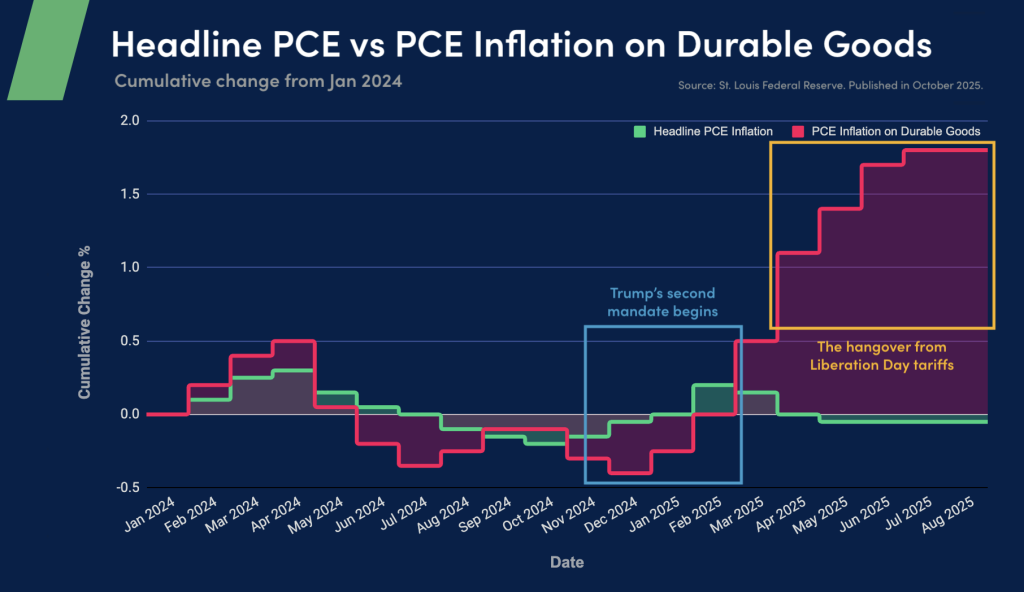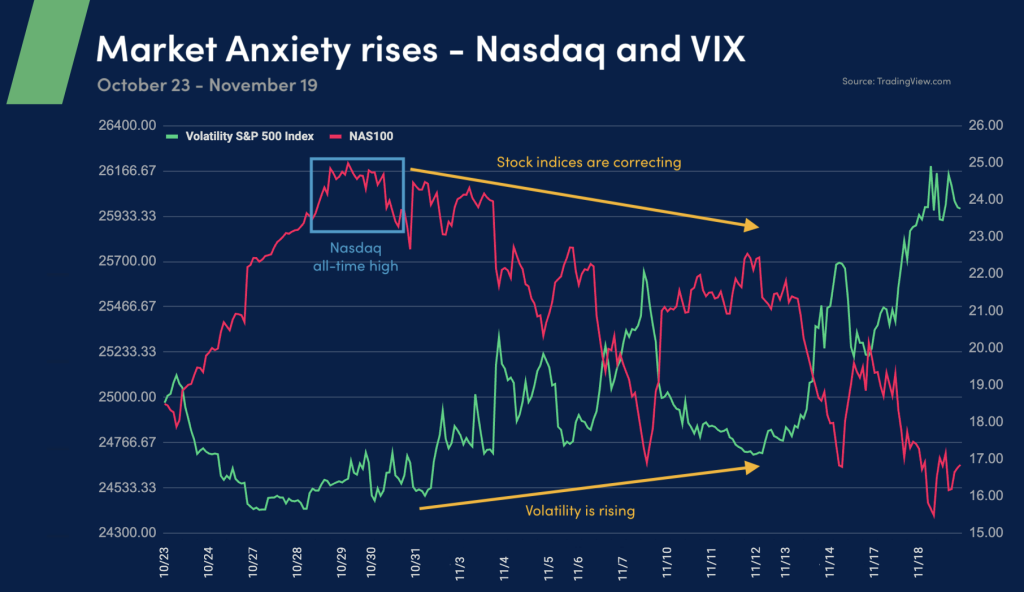
How economic uncertainty is shaping Black Friday and Christmas spending frenzy
How economic uncertainty is shaping Black Friday and Christmas spending frenzy
Market participants, analysts, and economists have all been looking for signs of a recession since 2022. An economic hard landing following the post-COVID boom seemed almost inevitable, given the numerous warnings that had appeared throughout. But as the end-of-year holiday shopping season approaches, a real test could be coming for the North American economies, which OANDA examines here.
The strategic consumer: How year-end North American spending habits have boosted consumption
North American consumers are known for their strong spending habits, but their year-round resilience still pales next to the annual shopping frenzy that erupts at the end of each year. Shoppers wait for Thanksgiving — and the Black Friday deals that follow — to stock up on Christmas gifts and stretch their budgets as much as possible.
But it’s not just about timing anymore. With inflation cutting into spendable income, consumers are increasingly waiting for discounts before making purchases. Black Friday has shifted from an impulse-driven buying spree to a much more strategic budgeting exercise.

This holiday season isn’t just about splurging, but more about necessity. Economic anxiety is shaping buying behavior, and households are beginning to prioritize essentials over discretionary and luxury goods.
After tariffs, political uncertainty, and the government shutdown, the big question is: Can the North American consumer deliver another strong holiday sales season, or are we reaching the limits of their resilience?
High-income shoppers are already slowing down their purchases and young consumers are still struggling to find employment, leading to even more containment from the traditional high spenders.
Adding the reports of the steepest pace of layoffs since 2003, when looking at the most recent Challenger Layoffs report, suggests that economic woes might be around the corner.

The cost of trade conflicts: Tariffs and the North American consumer
Economic data has remained resilient, but inflation and consumer confidence are now moving in opposite directions — both at an accelerating pace.
Tariffs have added another layer of pressure, leaving businesses unsure where their competitive edge will come from, as traditional supply chains have faced disruptions across both Canada and the United States.

Consumer sentiment and the effects of the shutdown data blackout
Consumer sentiment has been deteriorating for months, with tariffs serving as an immediate source of anxiety for both businesses and households. But the prolonged government shutdown could have been the nail in the coffin.
The University of Michigan’s Survey of Consumers noted that “with the federal government shutdown dragging on for over a month, consumers are now expressing worries about potential negative consequences for the economy.”
This shift in mood is reflected in the numbers: sentiment has plunged from 71.8 a year ago to 50.3 in the latest release, the second-lowest on record since the June 2022 trough.

The recently concluded government shutdown was the longest in history, spanning 43 days.
If the impact were limited to federal jobs alone, it might not be a major concern. But in addition to many forms of government checks not landing in American consumers’ pockets, Americans also started facing issues with travel, as airlines canceled flights due to air traffic controller shortages.
Short shutdowns tend not to concern investors and households much; however, the extended shutdowns in 2013 and 2019 worked against the economy when it was still growing. The real trouble may arise when this same economy is already facing a plateau from all these different factors.
Financial markets are still close to their all-time highs, so is it just fear?
The stock market is not the economy. Markets are trading relatively close to their all-time highs but have failed to surpass new records since mid-October 2025, leading to an ongoing stress test.
North American companies are still showing strong earnings growth, often driven by AI cost-cutting and robust demand for AI infrastructure. However, this is running into a challenging environment where consumers may have less to spend due to a slowing labor market and persistent tariff-led inflation worries.
If giants like Amazon and Walmart start to struggle to generate sales, the reality facing smaller businesses could be even worse. This creates a palpable feeling of uncertainty that divides the markets and the underlying economy.

So what is the bottom line of these trends?
Markets are inherently forward-looking, but this principle also equally applies to consumer confidence metrics, so for now, uncertainty remains only in fear territory. It is certain, however, that a deficit in consumer confidence can rapidly translate into reduced discretionary spending and a corresponding increase in savings, initiating a dynamic that can become a self-fulfilling prophecy for recession.
When economic uncertainty prevails, defensive habits among consumers inevitably alter consumption patterns. The critical assessment lies in determining if these shifts are substantial enough to precipitate a genuine slowdown, which would exacerbate current market outflows and depress job creation, triggering a full-blown recession. However, when evaluating current global growth, no major OECD nation is fully positioned within that scenario just yet.
The “smart consumer” operates with foresight, strategically planning expenditures and preparing for both optimal and adverse conditions, and does so even when the economy appears to be running well — planning your expenses is always a good idea.
From an investment standpoint, witnessing volatile stock market swings opens up many up and down trading opportunities, can help to establish robust investment portfolios, and acquire fundamentally strong companies that may be temporarily undervalued before ultimately achieving long-term recovery.
This article is for general information purposes only, not to be considered a recommendation or financial advice. Past performance is not indicative of future results. It is not investment advice or a solution to buy or sell instruments.
Opinions are the authors; not necessarily those of OANDA Corporation or any of its affiliates, subsidiaries, officers or directors.
Leveraged trading in foreign currency contracts or other off-exchange products on margin carries a high level of risk and is not suitable for everyone. We advise you to carefully consider whether trading is appropriate for you in light of your personal circumstances. You may lose more than you invest. We recommend that you seek independent financial advice and ensure you fully understand the risks involved before trading. Trading through an online platform carries additional risks. Losses can exceed deposits.
This story was produced by OANDA and reviewed and distributed by Stacker.



